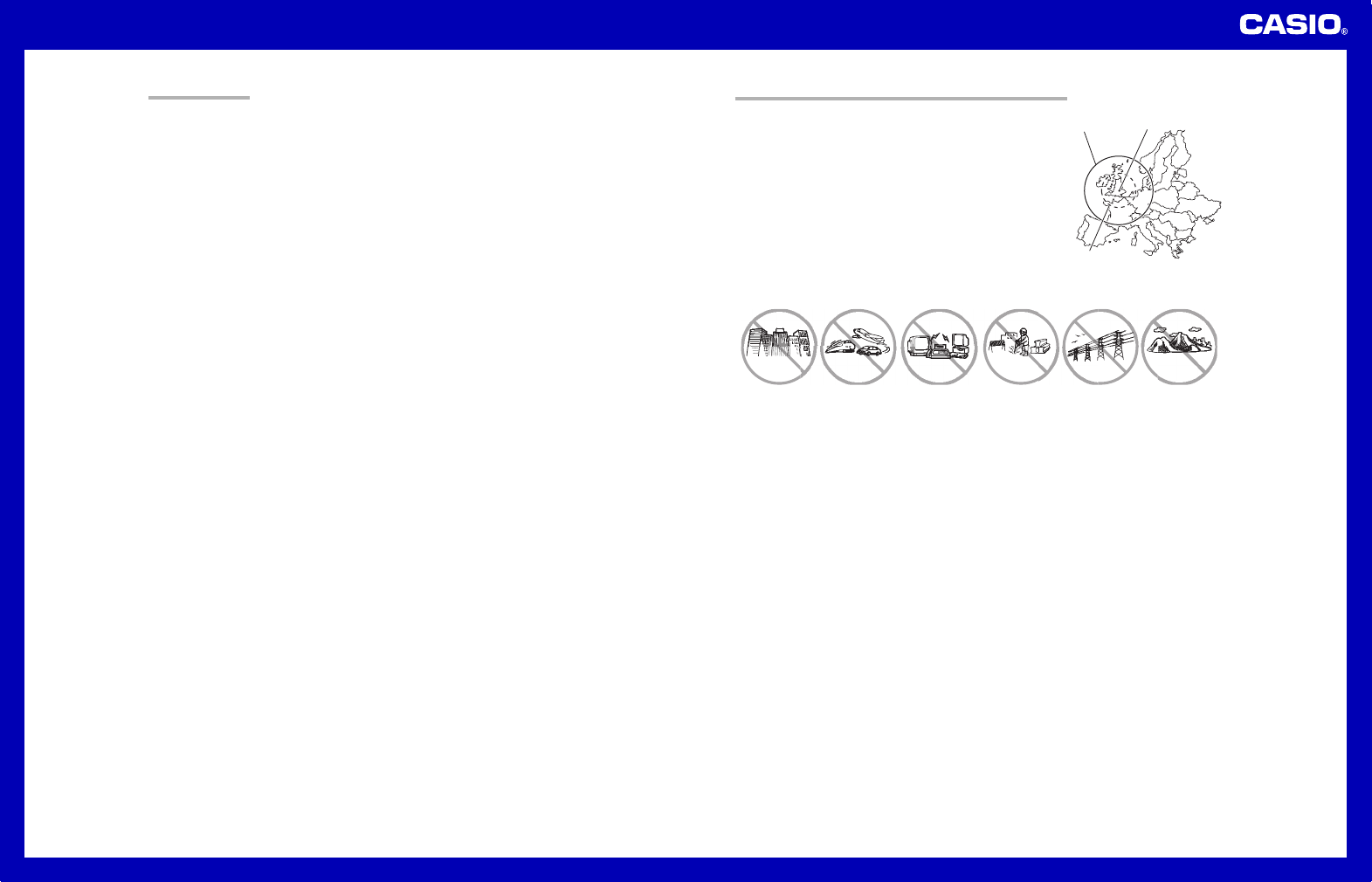
Operation Guide DQR-200U
2
GENERAL GUIDE
Main unit
1SNOOZE/LIGHT button
• Press this button to illuminate the display for about four seconds.
• Pressing this button while the alarm is sounding stops the alarm.
2Alarm Time Set buttons
Use these buttons to change the alarm time or current time setting.
3SET button
Use this button when setting the current time.
4WAVE button
Press this button to receive the time calibration signal and adjust timekeeping.
5Alarm Mode selector
SNZ: Snooze alarm on
ON: Alarm on
OFF: Alarm off
6RESET button
Press this button to reset the clock after replacing its batteries.
7MAX/MIN TEMP. button
Press this button to display the high and low temperature values.
8CLEAR button
Press this button to clear the currently displayed high/low temperature.
9°C/
°F button
Press this button to toggle the temperature units between Celsius and Fahrenheit.
0RE-SYNC button
Press this button to re-synchronize the timing of the main unit and the sub-unit.
Sub-unit
A°C/
°F button
Press this button to toggle the temperature units between Celsius and Fahrenheit.
BRESET button
Press this button to reset the sub-unit after replacing its batteries.
CTEST button
This button is for testing the unit. Normally, you should not press it. If you do, be sure to press the RESET
button (B) next.
TIME CALIBRATION SIGNAL RECEPTION PRECAUTIONS
• This clock is able to receive the time calibration signal transmitted from
Rugby, England. Signal reception is possible within approximately
1,000 km of the transmitter.
• Even when the clock is within the reception range, signal reception is
impossible if the signal is blocked by mountains or other geological
formations between the clock and signal source.
• Signal reception is affected by weather, atmospheric conditions, and
seasonal changes.
• The time calibration signal is bounced off the ionosphere. Because of
this, such factors as changes in the reflectivity of the ionosphere, as well
as movement of the ionosphere to higher altitudes due to seasonal
atmosaheric changes or the time of day may change the reception
range of the signal and make reception temporarily impossible.
• Reception is best when the back of the clock is facing toward Rugby.
Note, however, that moving the clock while the time calibration signal
receive operation is taking place will make stable reception impossible.
• Think of the clock as acting like a TV or radio when it is receiving the calibration signal.When receiving indoors,
move to a location as near as possible to a window. Proper signal reception can be difficult or even impossible
under the conditions listed below.
Rugby
1,000 kilometers
500 kilometers
Inside, among
buildings, or near
neon signs
Inside a vehicle Near refrigerators
or other household
appliances, near
office equipment,
mobile phones or
wireless LAN
devices.
Near a
construction site,
airport, or other
sources of
electrical noise,
underground or in
tunnels, near
railroads,
highways, or radio
stations with
interfering
frequencies.
Near high-tension
power lines
Among or behind
mountains
• Signal reception is normally better at night than during the day.
• Radio interference can make signal reception impossible.
• Strong electrostatic charge can result in the wrong time being set.
• The alarm does not operate during signal reception.







